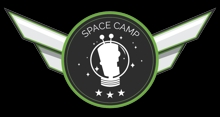 A long time ago, in a galaxy far away, I was a television reporter. The radio people, with whom we shared a newsroom, called us “vidiots.” Were we insulted? No way! We wore the title with pride.
A long time ago, in a galaxy far away, I was a television reporter. The radio people, with whom we shared a newsroom, called us “vidiots.” Were we insulted? No way! We wore the title with pride.
As someone in the business of face-to-face communication, I know I should be using video to share ideas. But memories of a world where smart professionals looked after shooting and editiing make me reluctant to wade into the land of do-it-yourself TV. So I was delighted to be invited to Video Space Camp, a full day of learning, brought to us by Vidyard. (It’s an amazing company I think of as “YouTube for real business.”)
There’s no way to capture a full day’s learning in a blog post, but here are the highlights, as seen through my lens.
The Future of the Internet is television
This is the opinion of Guy Gal, who joined us via Skype. It’s hard to disagree when we hear statistics such as, 1-billion unique users visit YouTube each month and 100 hours of video are uploaded every minute. Guy suggests video is the preferred medium for consuming information and, increasingly, for communication.
There’s a difference between online video and TV. Television encourages its audience to lean back and watch, while online video encourages them to lean in and participate, through comments, clicks, links, tweets and reposts. Encourage that. Engage with people. When that happens, buzz about your business spreads. You can also gather useful data.
Apply the principles of good communication
I’ve come to believe that the three most important things in communication are:
- Know your purpose – What do you want people to do as a result of your communication?
- Know your audience – Who are you talking with? What do they want, need, think, know?
- Know what happened as a result – How will you know if your communication worked?
The importance of those principles came through, loud and clear, as Victor Haseman spoke about his thinking in creating and managing the 5,000+ videos at SalesForce. Each has a purpose: attract attention to the brand, help people learn, help people evaluate products, help people justify a purchase, and provide info for existing customers. Victor advised us to, “Treat your videos as members of your sales force, hyper-efficient reps for your business.”
Measure, measure, measure
Another of my beliefs is that you don’t know what you really communicated until you see what people do about it. Knowing who watched a a video, how long they stayed, what they did next, where they came from – all are measurable. That this came up in almost every session was no surprise. It’s the key to understanding what you’re doing. Plus, detailed analytics are one of Vidyard’s differentiating competencies. What’s the point of communicating if you don’t know what happened as a result? Look at the data and analyze your audience and its behaviour in response to the video. That way you learn – about the video, about the audience, about communication.
DIY? Yes we can!
You don’t need to use professionals; just be professional. Sure, there’s junk out there: talking heads, poorly lit with fuzzy audio and nothing to say. Know that good content will make people watch. And good video can be made with tools you already have. For example, the original video for the Pebble Watch, which generated millions in preorders and crowdsourced production funding, was shot on a phone.
Still, don’t just point and shoot. Planning is critical. Jon Lucas and Andrew Askes of Arc Media emphasized that the time you put into pre-production saves time in producuction and post-production. That means building a story board and knowing every shot you’ll need. And invest upfront time to be sure it will resonate with the intended audience and reinforce your brand.
Be agile
Experiment. Observe. Learn. Iterate. Wherever I go, I’m getting that message. Whether our goal with video is to sell, to educate, to connect or to entertain, it won’t work unless we get out there and do it. Do it often. Do it on a regular schedule. And study the response.
I guess my next step is to read the instructions that came with my handicam – and I’ll see you onscreen.
Big thanks to the Vidyard team for a top-notch learning experience. And we can all keep learning at Space Academy.
